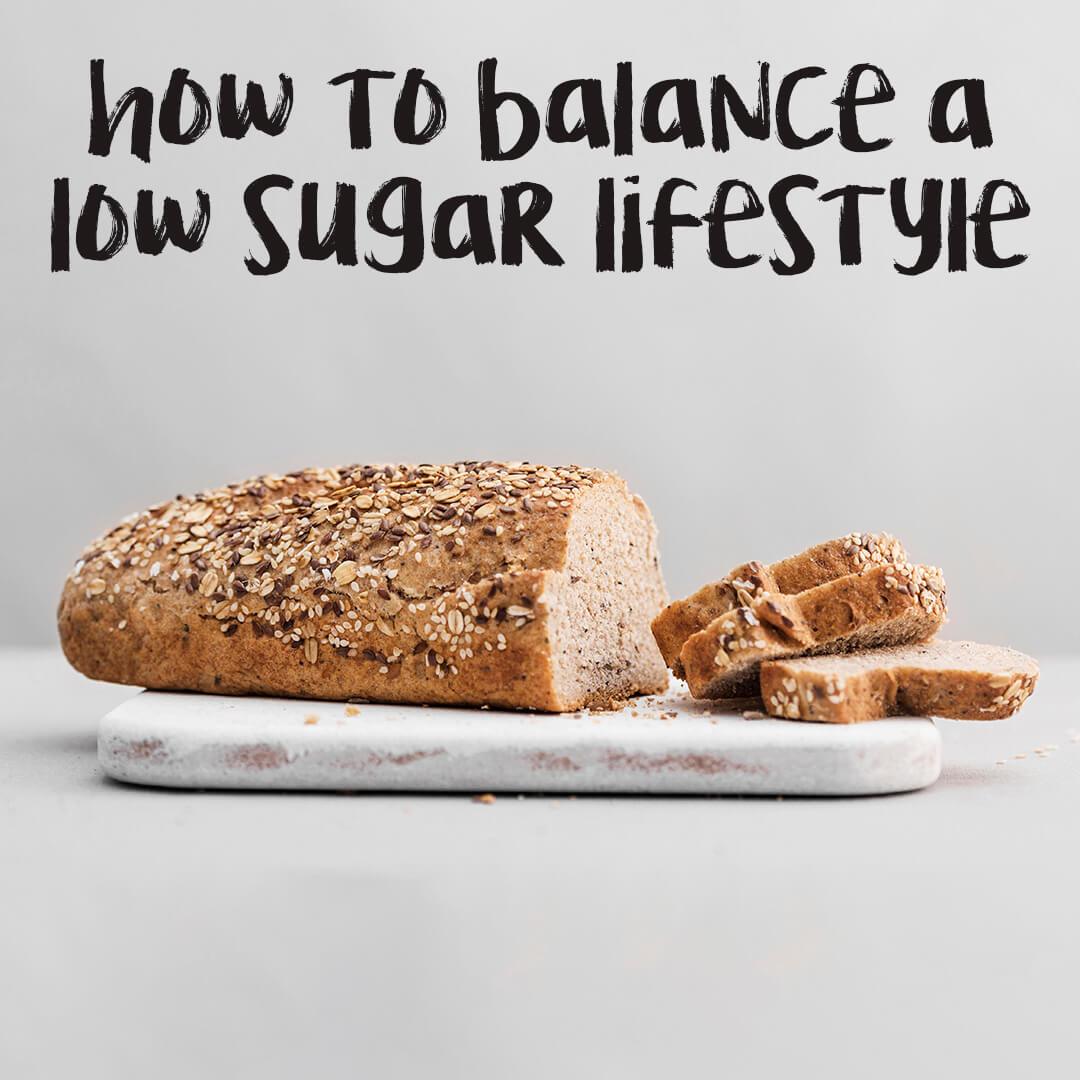HOW TO BALANCE A LOW SUGAR LIFESTYLE

How To Balance A Low Sugar Lifestyle

Poor concentration? Irritability between meals? Sporadic sugar cravings? Trouble sleeping? If all these things are resonating with you then the solution may be a low sugar diet.
All the symptoms you’re experiencing are due to the fact that once you consume a meal high in carbohydrates, your sugar your blood sugar levels will spike immediately. This will, in turn, instruct your body to store the extra sugar as fat.
This also works in the opposite way if you miss a meal. Your blood sugar will drop and again signals will be sent to alert your body to start burning the muscle you have, rather than the fat. This is where the tiredness and loss of focus comes from.
A low sugar diet is actually much easier to follow than what you might assume. There are many simple switches to make sure you are back to performing at your best. It’s important to consult with a dietitian or your GP before you make any major dietary changes. However, you may want to consider doing some of the following things to help achieve a low sugar lifestyle, which can be beneficial in many ways.
1. Ditch the white and go brown .

This one is probably the easiest change of them all. Basic things like switching from white to brown bread, pasta and sugar mean that you are cutting out processed carbohydrates which cause levels to spike and release quick energy bursts which will leave you feeling tired shortly after.
2. Eat breakfast.

Consuming a balanced meal in the mornings which provides a good source of protein, fibre and complex carbohydrates will ensure that energy is released slowly throughout the morning to leave you feeling alert up until lunch. Complex carbohydrate breakfast options include porridge and wholewheat cereals. Just remember to watch out for the added sugar!
3. Eat smaller, more frequent meals.
Having 3 large meals a day will again cause your blood sugar levels to rise and fall repeatedly throughout the day but by consuming smaller meals this will ensure a steady release of energy. This is achievable by picking up some healthy snacks. Unsalted rice cakes, nuts, low sugar granola bars and plain popcorn are all good options.
4. Healthy fats are your friend.

Contrary to the belief, all fats are not bad for you. Dark chocolate, Fish such as Salmon, Eggs and seeds are all examples of healthy fats that will ensure your body remains sustained between meals.
5. Watch out for added sugar.
Many products like pasta sauces, soups and ready meals contain much more sugar than you may think. When shopping make sure to check these levels as you could be unknowingly consuming large amounts of sugar under the assumption that these items are good for you.
6. Undertaking regular Exercise!

Taking part in regular exercise helps to reduce blood sugar levels by encouraging cells to burn glucose in your body for energy which will help you lose weight as well as encourage tissue and muscle repair.
Looking to make some more healthy lifestyle changes? Be sure to stay tuned for new blogs coming weekly and follow us Instagram or like our Facebook for daily updates and inspiration. Here’s to a healthy, happy 2019!



